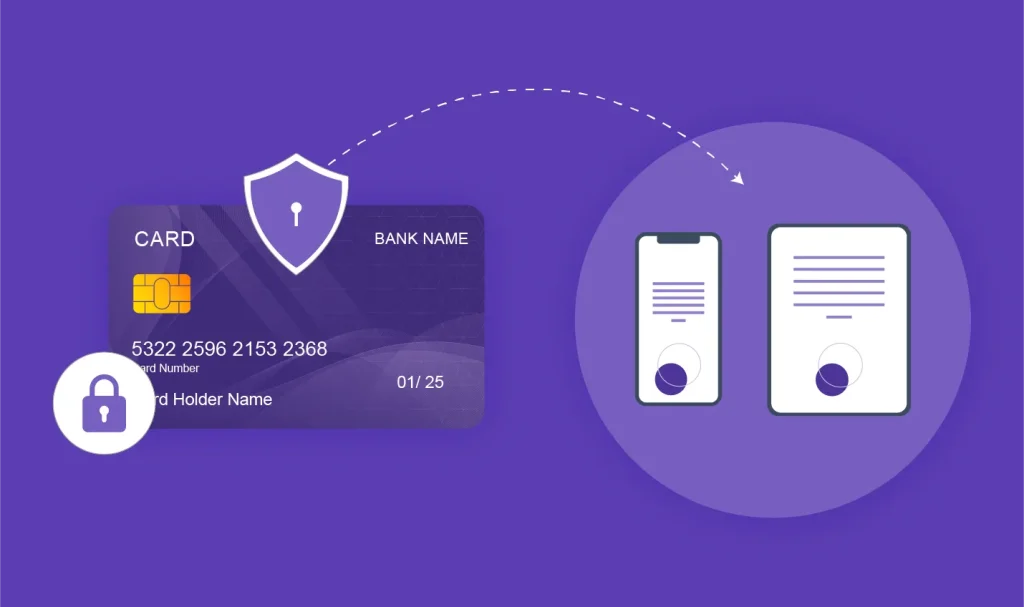Demystifying the Cloud: How to Store Your Data in a Minimalist Way

Understanding Cloud Storage
The concept of cloud storage may seem daunting, but it doesn’t have to be. At its core, the cloud provides a way to store and access your data remotely, liberating you from the constraints of physical storage devices like external hard drives and USB flash drives. As our lives become increasingly digitized, grasping this technology becomes essential for both personal and professional growth.
Why Choose Cloud Storage?
Cloud storage delivers numerous advantages that cater to minimalist principles, allowing you to declutter your digital life:
- Accessibility: Imagine being able to access your documents, photos, and files from anywhere in the world, whether you’re at home, in a café, or traveling across the country. With cloud storage, all you need is an internet connection, making it incredibly convenient.
- Scalability: One of the remarkable features of cloud storage is its ability to scale according to your needs. Have additional projects requiring more space? You can increase your storage capacity with just a few clicks, without the need to purchase more hardware.
- Cost-Effectiveness: With traditional storage solutions, you often pay upfront for far more space than you need. Cloud storage typically adopts a subscription model, allowing you to pay for only the storage you utilize, thereby reducing waste and saving you money.
Learning about how to store your data in a minimalist way can significantly streamline your life. It enables you to focus on what truly matters while optimizing your digital footprint. But where does one begin this journey into the cloud?
Key Features to Consider
When exploring cloud storage options, several critical features come into play:

- Security: In an era marked by frequent data breaches, ensuring your information is secure is paramount. Look for services that offer end-to-end encryption and two-factor authentication to safeguard your data from unauthorized access.
- User-Friendly Interfaces: The best cloud storage solutions come with intuitive and easy-to-navigate interfaces. Search for platforms that simplify file management and allow you to organize your files effectively, promoting a more efficient workflow.
- Integration: Seek a service that integrates seamlessly with your devices and other software you already use. For example, if you are embroiled in creative work, options that sync with design software can optimize your productivity.
By demystifying the cloud, you will find it an invaluable tool for maintaining a simplified digital lifestyle. Think of it as an extension of your physical space that adapts dynamically to your life’s needs. Are you ready to delve into effective cloud storage solutions and explore the myriad benefits they offer?
DIVE DEEPER: Click here to uncover more insights
Navigating the World of Cloud Storage
As you embark on your journey to store your data in a minimalist way, it’s crucial to understand the foundational concepts of cloud storage. While it may feel like a complex universe of technical jargon, cloud storage fundamentally operates on straightforward principles that anyone can grasp. Let’s break it down.
The Basics of Cloud Storage
In the simplest terms, cloud storage is an online service that allows you to save files and data on a remote server rather than on your personal computer or an external device. This means your information is stored “in the cloud,” making it accessible from any device with internet connectivity. The essence of cloud storage aligns perfectly with minimalist living, as it encourages a decluttering of physical space while enhancing accessibility.
Types of Cloud Storage
When considering which type of cloud storage is right for you, there are several options to explore:
- Public Cloud: This is a storage option where data is hosted by service providers over the internet and shared among multiple users. Popular examples include Google Drive and Dropbox. Public cloud services are often cost-effective and require minimal effort to set up, making them ideal for personal storage needs.
- Private Cloud: A private cloud retains the same benefits as public cloud services, but it is exclusively used by a single organization or individual. This level of customization typically offers greater privacy and control over data but may come at a higher cost and requires more management.
- Hybrid Cloud: The hybrid cloud combines both public and private cloud features, allowing users to store sensitive information in a secured environment while utilizing the scalability of public clouds for less critical files. This flexibility is excellent for individuals or businesses managing diverse data requirements.
As you consider these options, think about your specific storage needs, as well as your overall approach to digital minimalism. Do you require public accessibility for collaboration, or do you prioritize privacy and security? Recognizing your unique needs will guide you in selecting the right cloud storage solution.
Assessing Your Storage Needs
Before diving into the cloud, take stock of your current digital footprint. Consider the following questions:
- What types of files do you accumulate regularly—documents, photographs, music, or videos?
- How often do you access these files? Daily? Weekly?
- Do you have any specific privacy concerns that could dictate your cloud storage choice?
- Are you collaborating with others who require shared access to your files?
By answering these questions, you’ll gain valuable insight into the amount of space you need and the level of accessibility necessary, ultimately refining your approach to cloud storage.
Moving toward a minimalist methodology with your cloud storage not only helps you organize your digital life but also fosters a clearer mindset. Embracing the cloud is not merely about hosting files but creating a flexible and efficient digital habitat that can evolve with your personal and professional journey.
| Category | Key Benefits |
|---|---|
| Accessibility | Access your data anytime, anywhere with an internet connection, promoting a seamless workflow. |
| Cost Effective | Reduce hardware expenses by leveraging cloud storage, eliminating the need for physical storage systems. |
| Security | Enjoy enhanced data security through encryption and advanced security protocols implemented by cloud service providers. |
| Scalability | Quickly adjust storage needs as your data requirements grow, ensuring optimal resource management. |
| Collaboration | Facilitate real-time collaboration with team members by sharing access to cloud-stored files. |
Exploring the advantages outlined above offers a compelling insight into how the cloud can enhance your data management strategy. By adopting a minimalist approach, individuals and organizations alike can focus on what truly matters—effective data access and management—while minimizing clutter and costs. Have you considered how these benefits can apply to your lifestyle or business? The possibilities for efficiency and growth are abundant in the cloud!
DISCOVER MORE: Click here to learn how organization can boost your mental health
Maximizing Efficiency with Minimalist Cloud Storage
Once you’ve evaluated your storage needs and selected the type of cloud service that aligns with your goals, it’s time to focus on maximizing your efficiency. A minimalist approach emphasizes simplicity and functionality, and the same principles can be applied to cloud storage. Understanding how to effectively manage and optimize your cloud environment is key to ensuring you don’t get lost in the vast expanse of digital data.
Organizing Your Files
An essential step in cloud storage is effective organization. To maintain a minimalist lifestyle, consider adopting a systematic approach to how you store files:
- Folder Structure: Create a clear hierarchy for your folders. Start by categorizing files into broad sections — work, personal, finance, etc. Within each category, establish subfolders for further granularity, like projects, receipts, and correspondence. This reduces the time spent searching for items and aids in maintaining a clutter-free system.
- Naming Conventions: Develop a consistent naming convention for your files. Using clear, descriptive names (e.g., “2023_Tax_Return.pdf” instead of “Document1.pdf”) makes retrieval faster and enhances clarity. Including dates or key terms can also streamline searches.
Regular Evaluations and Deletions
In the spirit of minimalism, regularly assessing your digital inventory is paramount. Schedule time—perhaps quarterly—to review your stored files:
- Delete Unnecessary Files: Whether it’s outdated documents, duplicates, or irrelevant photos, take the time to delete what you don’t need. This not only frees up space but also creates a more focused environment where essential files are easily accessible.
- Archive Old Files: Not everything needs to be readily available. Use your cloud service’s archiving tools to store files you don’t frequently access but may need later. For instance, old project files can be archived to a specific folder labeled “Archive” to minimize clutter in your active workspace without permanently deleting them.
Leveraging Cloud Features
Modern cloud storage services come packed with features that can enhance your experience—but they can also complicate things if not used wisely. Here are some features worth exploring:
- File Sharing: Take advantage of the sharing capabilities offered by your cloud platform. Instead of emailing large files back and forth, use cloud sharing links. This not only speeds up collaboration but also ensures everyone has access to the most current version of a document.
- Backups and Syncing: Make sure to utilize automatic backup and file syncing options. Many cloud services offer features that keep your essential files updated across devices. This minimizes the risk of data loss and reduces the need for manual organization.
Embracing the Right Tools
To support your minimalist cloud storage journey, consider integrating third-party tools that promote organization and efficiency:
- Todoist for File Management: Use task management apps to keep track of important documents that need your attention. Assure your essential files are consistently organized and prioritize actions required.
- IFTTT or Zapier for Automation: Embrace automation tools to streamline file management tasks. For instance, you can set triggers to automatically save email attachments to specific cloud folders.
By implementing these strategies within your cloud storage, you create a cohesive, minimalist environment. This fosters not just efficiency in managing files but also leads to a more organized digital life, ultimately making technology serve you rather than becoming a source of clutter and confusion.
DISCOVER MORE: Click here to uncover powerful decluttering techniques
Conclusion: Embracing a Minimalist Cloud Approach
In the ever-evolving digital landscape, demystifying the cloud and adopting a minimalist approach to data storage can profoundly simplify your life. By prioritizing organization, efficiency, and selective data retention, you streamline your cloud experience and enhance your productivity. Implementing structured folder hierarchies and consistent naming conventions not only makes file retrieval quick and intuitive but also sets a foundation for a clutter-free digital environment.
Regular evaluations and the judicious deletion of unnecessary files ensure that your cloud storage remains relevant and easy to navigate, while archiving older documents provides a safety net without contributing to confusion. Furthermore, leveraging features like file sharing, backups, and syncing transforms your cloud storage into a dynamic space that fosters collaboration and minimizes the risk of data loss.
As you embrace this minimalist ideology, consider integrating productivity tools that enhance your organization and automate repetitive tasks. Utilizing platforms such as Todoist or automation services like IFTTT or Zapier will not only reinforce your minimalist principles but also maximize your overall effectiveness in managing digital assets.
Ultimately, by understanding and applying these strategies, you empower yourself to take control of your cloud storage, ensuring it becomes a space of clarity and accessibility. As we continue this digital journey, let the principles of minimalism guide your decisions, making your interaction with technology a tool to enrich rather than complicate your life.



